
In the intricate world of arthropods, few evolutionary adaptations are as fascinating as mimicry – the art of resembling another species for survival advantage. Among the most remarkable practitioners of this deceptive craft are certain spiders that have evolved to look, move, and even smell like ants. These arachnid imposters have perfected their disguise to such a degree that they can walk among ant colonies undetected, using their camouflage for protection, hunting, or both. The evolutionary dance between these spiders and their ant models represents one of nature’s most sophisticated examples of adaptive resemblance, showcasing how natural selection can craft extraordinary solutions to survival challenges.
The Evolutionary Marvel of Ant Mimicry
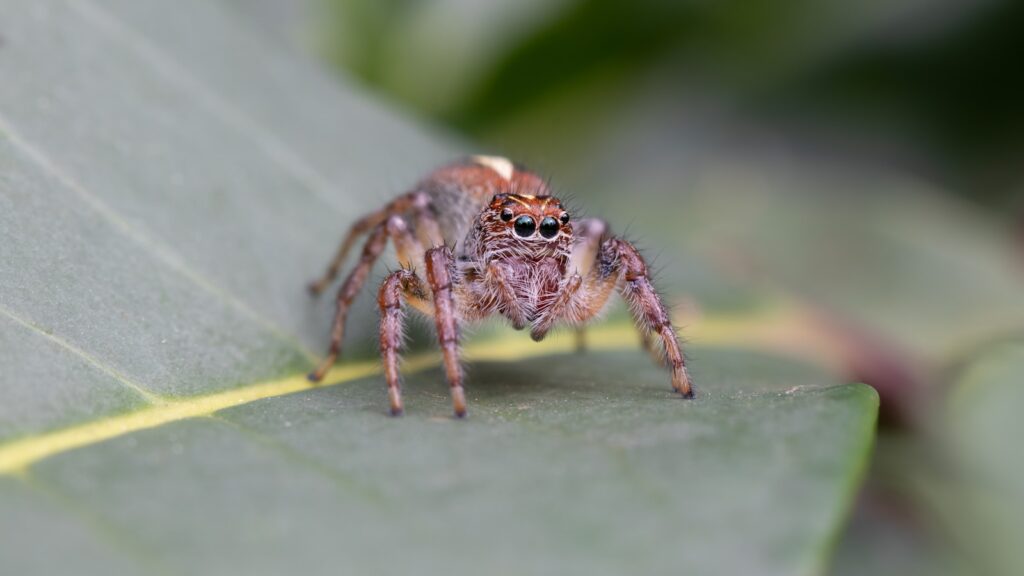
Ant-mimicking spiders belong to several families, with the most famous examples found among the jumping spiders (Salticidae) and the sac spiders (Corinnidae). This remarkable adaptation didn’t happen overnight but evolved over millions of years through natural selection. The benefits of resembling ants are substantial: ants are often avoided by predators due to their aggressive behavior, painful stings, and unpalatable chemical defenses. By adopting an ant-like appearance, these spiders gain protection from predators that would otherwise see them as an easy meal. The evolutionary pressure has been so strong that some species have independently evolved ant mimicry multiple times, a phenomenon known as convergent evolution.
Anatomical Transformations for Perfect Deception

To achieve convincing ant mimicry, spiders have undergone dramatic anatomical modifications that defy their typical spider body plan. Most spiders have two distinct body segments, but ant-mimicking species create the illusion of three segments by having a constriction in their abdomen or by having color patterns that visually break up their silhouette. Their legs have adapted to be longer and more ant-like, often with the first pair modified to resemble antennae, which they wave around while walking. Some species even develop fake “waists” that mimic the narrow petiole connecting an ant’s thorax and abdomen. Perhaps most remarkably, these spiders often abandon the traditional eight-legged gait of arachnids, instead walking on six legs while holding their front pair aloft as faux antennae.
Myrmarachne: The Premier Ant Impersonators
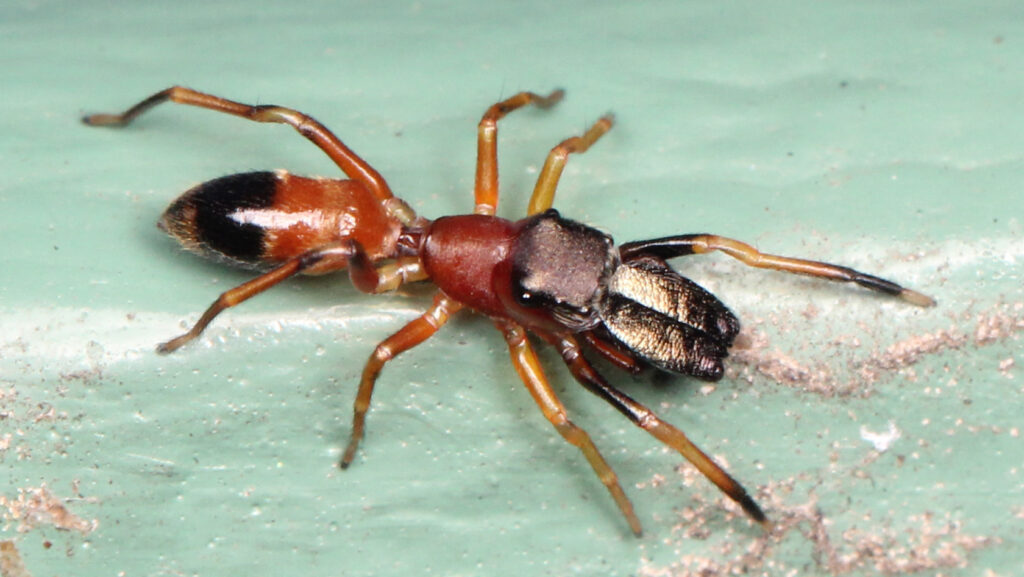
Among the most specialized ant mimics are spiders in the genus Myrmarachne, whose very name means “ant spider” in Greek. These jumping spiders have evolved to mimic specific ant species with astonishing precision, from color patterns to body shape and movement patterns. Myrmarachne species are found worldwide in tropical and subtropical regions, each typically mimicking local ant species that are abundant in their habitat. Males of these species face an additional challenge: they possess large chelicerae (jaws) for mating displays that could ruin their ant disguise. Evolution has solved this problem elegantly, with male Myrmarachne evolving elongated chelicerae that resemble an ant carrying an object in its mandibles, turning a potential disguise liability into an asset.
Behavioral Mimicry: Acting the Part
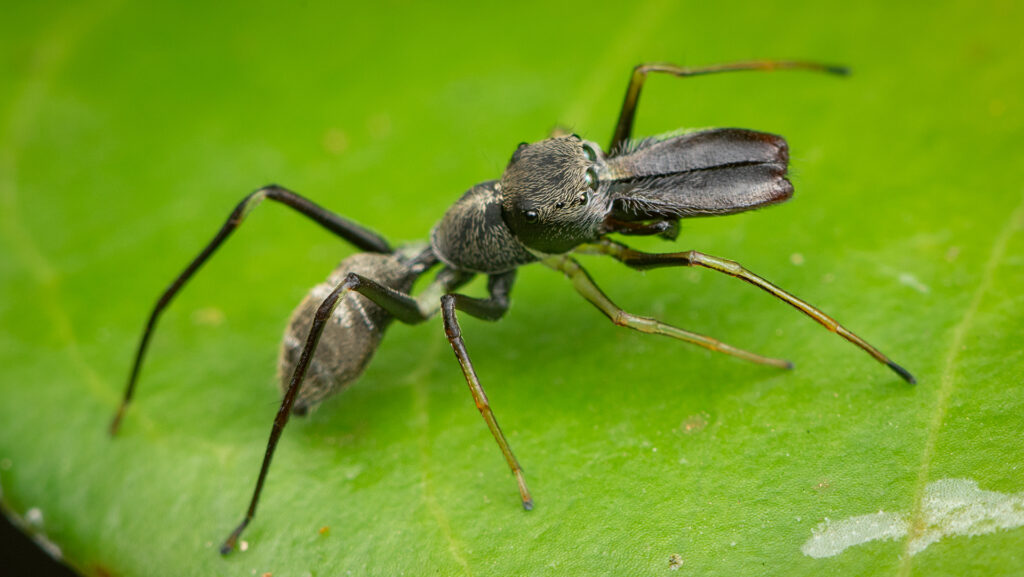
Physical resemblance is only part of the deception; ant-mimicking spiders have also mastered behavioral mimicry to complete their disguise. They move with the erratic, stop-and-start pattern characteristic of ants rather than the smooth movements typical of spiders. Many species have abandoned the web-building behavior of their ancestors entirely, becoming active hunters that patrol the ground like their ant models. Some even adopt specific ant behaviors, such as raising their front legs to mimic antennal communication or moving in trails as ants do. This behavioral mimicry is so precise that even experienced entomologists can have difficulty distinguishing these spiders from actual ants without close examination.
Chemical Disguise: The Ultimate Deception
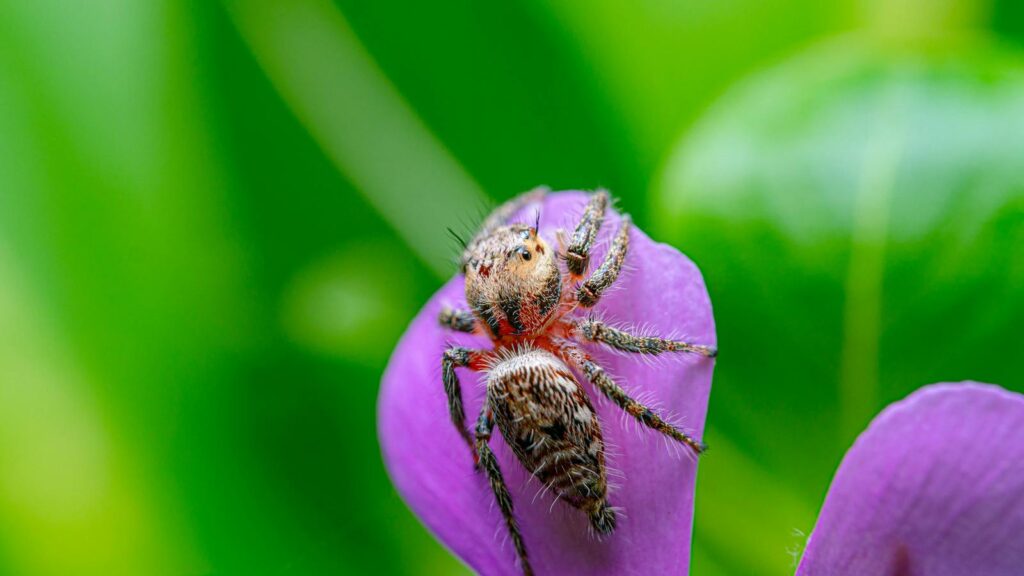
Perhaps the most sophisticated aspect of ant mimicry goes beyond what the human eye can detect—chemical camouflage. Ants recognize colony members primarily through chemical signatures, making visual mimicry alone insufficient for spiders that need to get close to ant colonies. Research has revealed that some ant-mimicking spiders produce or acquire chemical compounds that mask their true identity from ants. Some species accomplish this by picking up surface chemicals from the ants’ environment, while others may produce compounds that don’t trigger the ants’ recognition systems. This chemical mimicry represents the pinnacle of deceptive adaptation, allowing these spiders to operate with impunity even within the territory of normally aggressive ant species.
Aggressive Mimicry: The Predatory Advantage
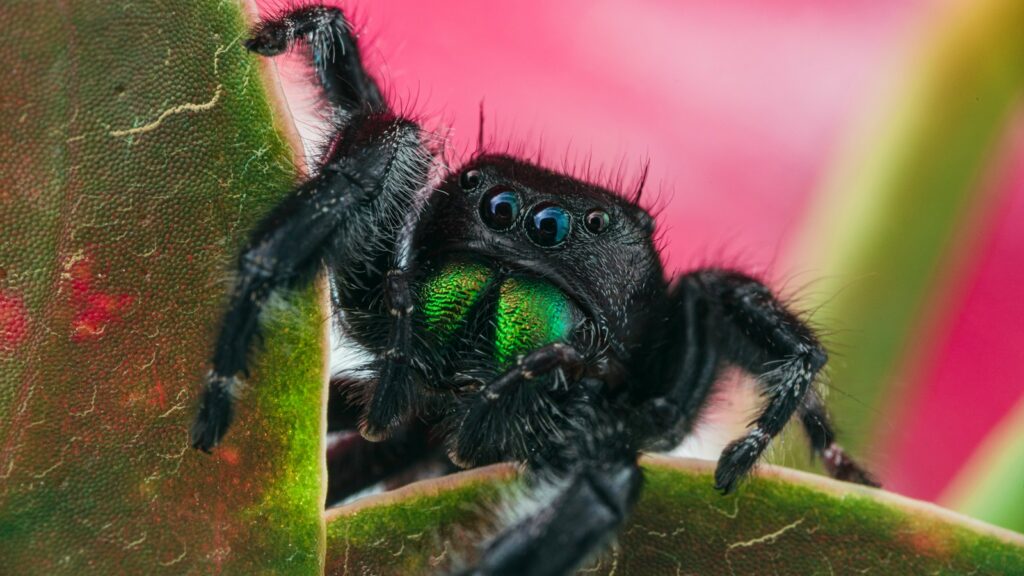
While some ant-mimicking spiders adopt their disguise purely for protection, others employ what scientists call “aggressive mimicry”—using their resemblance to hunt the very ants they mimic. These predatory mimics can approach ant colonies without triggering defensive responses, placing them in the perfect position to ambush their prey. The jumping spider Mexcala elegans, for instance, specializes in hunting ants, using its disguise to get close before launching a surprise attack. This hunting strategy represents a remarkable evolutionary arms race, where the predator has evolved to mimic its prey’s appearance so effectively that it can infiltrate their social groups. The precision of this mimicry must be nearly perfect, as a failed disguise could quickly turn the hunter into the hunted.
Batesian Mimicry: Borrowing Ants’ Fearsome Reputation

Many ant-mimicking spiders engage in what biologists call Batesian mimicry, where a harmless species evolves to resemble a dangerous or unpalatable one. Ants make excellent models for this type of mimicry because they’re typically well-defended with powerful jaws, stings, formic acid, or other chemical defenses. Potential predators like birds, lizards, and other spiders learn to avoid ants after unpleasant encounters and subsequently avoid anything that looks ant-like. Research has demonstrated that ant-mimicking spiders experience significantly lower predation rates than non-mimetic relatives of similar size. This protection comes at a cost, however, as these spiders must forfeit some typical spider behaviors and anatomical features to maintain their disguise.
Regional Variations in Ant Mimicry
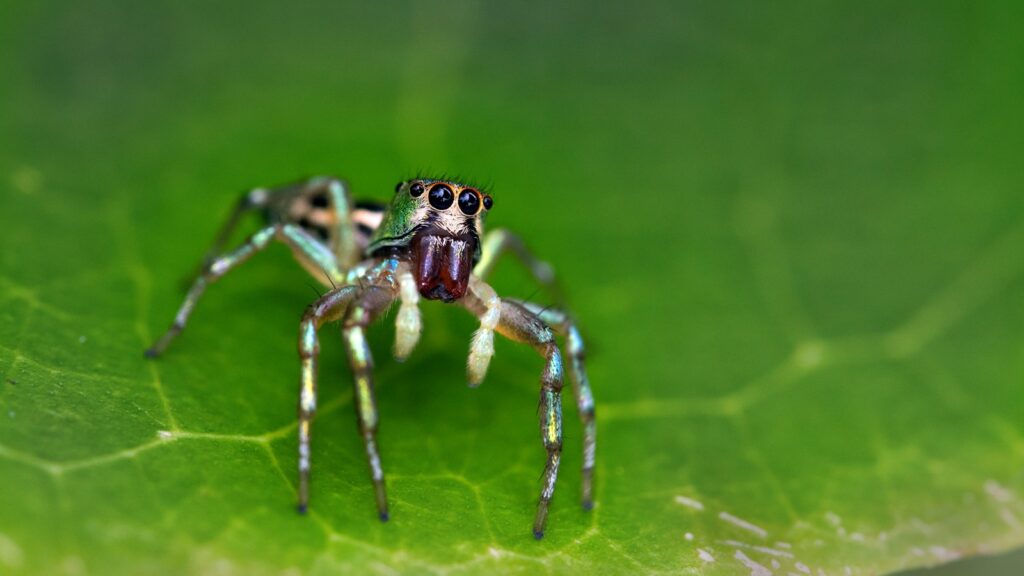
Ant-mimicking spiders display fascinating regional variations, with different species evolving to resemble locally abundant ant species. In the tropics, where ant diversity reaches its peak, the diversity of ant-mimicking spiders is correspondingly high. A single forest in Southeast Asia might contain dozens of different ant-mimicking spider species, each resembling a different ant model. These regional variations demonstrate the principle of local adaptation in evolution. Some mimics are so specialized that they resemble only one specific ant species found in their immediate habitat. This specialization highlights how natural selection can fine-tune adaptations to local ecological conditions, resulting in a geographic mosaic of mimicry relationships.
Sexual Dimorphism in Ant Mimics

Many ant-mimicking spider species exhibit pronounced sexual dimorphism, with males and females looking noticeably different from each other. This presents an evolutionary puzzle: how can both sexes maintain effective mimicry while developing different physical characteristics? In Myrmarachne formicaria, for example, females closely resemble worker ants, while males have enormously enlarged chelicerae for mating displays that would seem to compromise their disguise. Evolution has solved this problem creatively—males’ enlarged mouthparts resemble ants carrying objects, a common sight that doesn’t trigger suspicion from predators familiar with ant behavior. This sexual dimorphism demonstrates the remarkable flexibility of mimicry systems and how natural selection can accommodate seemingly contradictory demands.
The Accuracy-Generalization Spectrum

Not all ant-mimicking spiders achieve the same degree of resemblance to their models, with species falling along a spectrum from precise to general mimicry. Some species, like certain Myrmarachne, are such perfect mimics that even experts need careful examination to distinguish them from their ant models. Others exhibit more general ant-like features that merely suggest “ant-ness” rather than mimicking a specific species. This spectrum reflects different evolutionary strategies and trade-offs. Precise mimics typically gain better protection but are constrained to environments where their specific model is present. Generalized mimics sacrifice some mimetic accuracy but can thrive in more diverse habitats where various ant species occur. This diversity of mimetic precision demonstrates how natural selection can produce multiple successful solutions to similar evolutionary challenges.
Challenges in Studying Ant-Mimicking Spiders
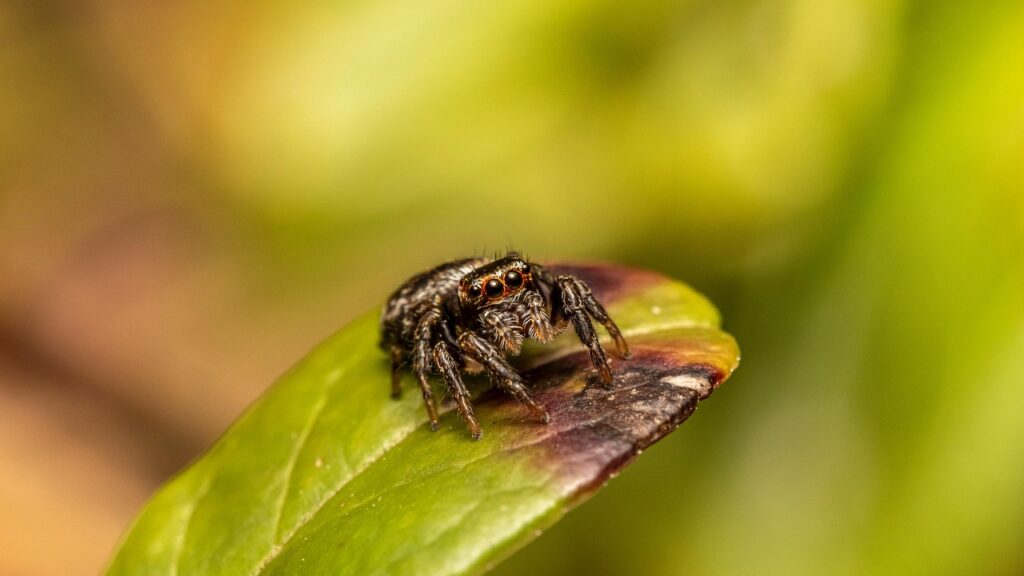
Researching ant-mimicking spiders presents unique challenges that have limited our understanding of these fascinating creatures. Their small size, cryptic behavior, and the very effectiveness of their disguise make them difficult to locate and study in the wild. Many species remain poorly described, particularly in biodiversity hotspots like tropical rainforests. Laboratory studies are complicated by the difficulty of replicating the complex social environments where these mimicry relationships evolved. Additionally, testing hypotheses about predator avoidance requires observing rare predation events or designing complex experimental setups. Despite these challenges, modern research techniques, including high-speed videography, chemical analysis, and DNA sequencing, are gradually revealing the secrets of these master mimics.
Conservation Implications
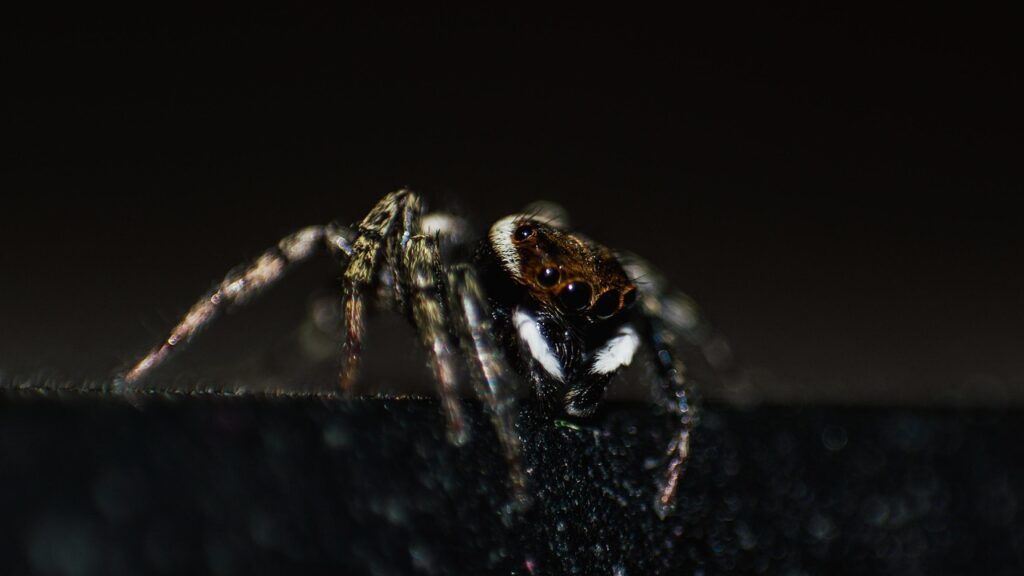
Ant-mimicking spiders, with their highly specialized adaptations and ecological relationships, face particular conservation challenges in our changing world. Many species have co-evolved with specific ant models and depend on the continued presence of those ants in their habitat. Habitat destruction, particularly in tropical regions where ant-mimicking spider diversity is highest, threatens to disrupt these delicate ecological relationships. These specialized mimics may be especially vulnerable to environmental changes that affect either their models or the predators that drive mimicry evolution. Conservation efforts rarely focus on invertebrates like these spiders, despite their scientific importance and the fascinating evolutionary stories they represent. Protecting the complex habitats where these mimicry relationships evolved is essential for preserving these living examples of evolution’s creative power.
The extraordinary world of ant-mimicking spiders represents one of nature’s most impressive evolutionary achievements. Through millions of years of natural selection, these arachnids have transformed their bodies, behaviors, and even biochemistry to create disguises of remarkable sophistication. Their success demonstrates the power of evolutionary processes to craft solutions to survival challenges that blur the lines between different animal groups. As we continue to study these master mimics, they offer valuable insights into fundamental biological principles, including adaptation, predator-prey dynamics, and the evolutionary arms races that drive biodiversity. In the grand theater of natural selection, few performances are as compelling as the spider that walks, looks, and lives as if it were an ant—a true master of evolutionary deception.
